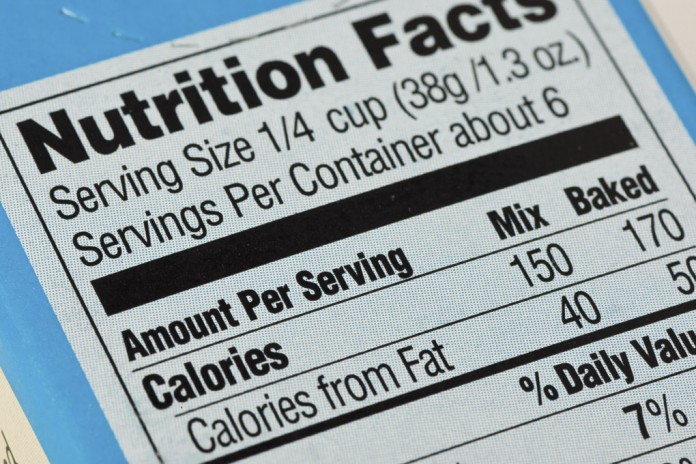By Tracy Turner | Ohio State Chow Line
Q: “There seems to be something different about the nutrition label on some of the foods I’ve purchased lately. Did the labels change?”
A. Yes. In fact, the nutrition labels on some foods have changed and will soon change on other food products, thanks to new rules instituted by the U.S. Food and Drug Administration.
The FDA announced the updated nutrition label design in 2016 as part of an effort to reflect updated scientific findings to help consumers make better-informed decisions about food choices and maintain healthy diets, the government agency said.
One of the biggest changes consumers can expect to see is a larger, bolder typeface for both calories and serving sizes. The typeface will be easier for people to see and read. And the serving sizes have been updated to better reflect the amounts of food and drink that people typically consume, not how much they should consume, the FDA said.
The change was based on more up-to-date food consumption data, which shows that people have typically been eating larger serving sizes than they previously had.
While the new labels were already placed on about 10% of food packages being sold last year, the FDA required food manufacturers with $10 million or more in annual food sales to have the labels on all of their products by this year. Manufacturers with less than $10 million in annual food sales will have until 2021 to put the new labels on all of their food products, the FDA said.
“The new label reflects updated scientific information, including our greater understanding of the links between diet and chronic disease,” the FDA said in a written statement. “It is also more realistic about how people eat today.”
Other changes you’ll see on the labels, in addition to the more realistic serving sizes, are that some packages are listing nutrition information per serving as well as per package. For example, the FDA said that on a pint of ice cream, you will see calories and nutrients listed for one serving and for the whole container.
The labels will also list added sugars, which are either added during the processing of foods or are packaged as such.
The scientific evidence underlying the 2010 and the 2015–2020 Dietary Guidelines for Americans supports reducing caloric intake from added sugars. Consuming too much added sugars can make it difficult to meet nutrient needs while staying within calorie limits, the FDA said.
Vitamin D and potassium will also be added to the list of nutrients required on the labels, whereas vitamins A and C are no longer required to be listed.
“Vitamin D and potassium are nutrients American’s don’t always get enough of, according to nationwide food consumption surveys, and when lacking, are associated with increased risk of chronic disease,” said Jenny Lobb, a family and consumer sciences educator for Ohio State University Extension.
OSU Extension is the outreach arm of The Ohio State University College of Food, Agricultural, and Environmental Sciences (CFAES).
“Manufacturers can still list vitamins A and C if they wish, but deficiencies of these vitamins are rare,” she said.
The information on daily values for nutrients such as sodium, dietary fiber, and vitamin D has also been updated and is used to calculate the percentage of Daily Value (DV) that is on the labels. The percentage of DV provides nutrition information in the context of a daily diet based on 2,000 calories per day.
Chow Line is a service of the College of Food, Agricultural, and Environmental Sciences and its outreach and research arms, OSU Extension and the Ohio Agricultural Research and Development Center. Send questions to Chow Line, c/o Tracy Turner, 364 W. Lane Ave., Suite B120, Columbus, OH 43201, or turner.490@osu.edu.

















